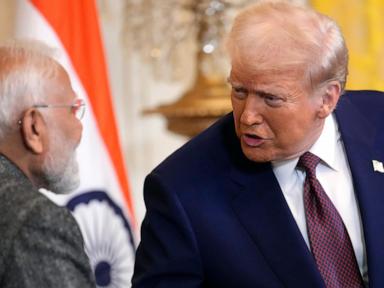U.S. President Donald Trump has announced a significant escalation in trade tensions with India, imposing an additional 25% tariff on Indian imports due to the country’s purchases of Russian oil. This latest move increases the total U.S. tariffs on India to 50%, a development that India has labeled “unfortunate.” This announcement comes as both nations are engaged in complex negotiations for a bilateral trade agreement.
The tariffs were publicly confirmed on August 2, 2023, during a time when the economic relationship between the two countries seemed to be deteriorating despite the personal rapport between Prime Minister Narendra Modi and Trump. Their relationship was initially marked by optimism when they met earlier this year in Washington, where they discussed expanding bilateral trade to $500 billion by 2030. However, the lack of concrete progress has become evident as negotiations have faced numerous obstacles.
In previous months, Trump had imposed tariffs on various countries, including Canada, Mexico, and China, while often criticizing India as a “tariff king.” Despite this, he initially refrained from imposing tariffs on India, although he warned that high tariffs could be forthcoming. After Modi’s visit to Washington, there was a sense of optimism regarding trade discussions. However, as negotiations progressed, Trump reiterated his threats of high tariffs on Indian goods, leading to increased uncertainty.
Following Modi’s meeting with Trump, India’s Commerce Minister Piyush Goyal visited Washington to initiate negotiations for the proposed trade deal. During this period, U.S. officials, including Vice President JD Vance, indicated that both sides were making progress. They finalized terms for the trade negotiations, suggesting a potential resolution was on the horizon.
Despite these efforts, tensions escalated when Trump claimed to have played a role in halting military hostilities between India and Pakistan by suggesting trade concessions to both nations. Indian officials expressed anger over these assertions, leading to further complications in the discussions.
In a recent turn, Trump announced the imposition of the 25% tariffs on Indian imports while labeling the Indian economy as “dead.” He also indicated that further penalties could be on the way if India continued its oil purchases from Russia, which has been under international sanctions since the onset of the conflict in Ukraine.
The tariffs are set to take effect within 21 days, further complicating an already fragile negotiation landscape. Goyal stated that India remains open to making trade agreements in the national interest but emphasized that the country would not rush into deals merely to meet deadlines.
As the situation evolves, it remains crucial for both nations to navigate their trade relationship carefully, balancing economic interests with broader geopolitical considerations. The consequences of these tariffs could have significant implications for both economies moving forward.
